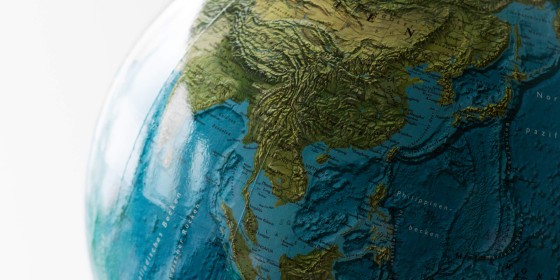#GreenRecovery
Now is the time to set Europe on a course for sustainable production!

Why now is a particularly important time to remain competitive – with a fair electricity price for European industry that will secure jobs for a green future.

“Only by harnessing large quantities of renewable electricity can energy-intensive industry move purposefully toward carbon neutrality and kick-start a renewable hydrogen economy. During this transformational shift, inexpensive green electricity represents the best hydrogen strategy for industry.”
Dr. Christian Hartel | President & CEO | Wacker Chemie AG
There’s more at stake.

Promoting industry-friendly, sustainable policies is about more than just being competitive.
There’s more at stake: the future of our world will be determined today.
The Coronavirus Will Leave Its Mark
The shutdown of the European economy to protect the public is going to have far-reaching economic consequences. Our challenge now is to navigate these difficult times with clear heads.
In Times of Crisis, Reason and Collaboration are More Important than Ever.
The coronavirus pandemic has made many people aware of the fact that we are linked by more than just our economies. Embedded within the crisis, however, lies an opportunity: this new awareness could also grow into political unity on a global level. International collaboration, after all, is clearly superior to unilateral action. This also holds true for our crisis prevention and management in general and for efforts that go beyond the current crisis - regardless if they take the form of novel viruses or the climate crisis that has been looming for decades. When it comes to tackling the challenges of climate change, it’s 5 minutes to midnight.
COVID-19 Is Changing the World
Once we as a society have weathered the current crisis, we need to do everything we can to prevent the next one – before it’s too late. From this perspective, building resilience for the climate crisis means that all economic stimulus programs being established right now also need to help us achieve our climate goals. To that end, the EU Commission and numerous EU Member States – including Germany – have announced recovery programs that consider climate protection. Germany in particular, will have to use its leadership role under the EU Council Presidency to help set the stage for implementing these climate initiatives on an EU-wide level. Germany should seize the opportunity to become the engine of a #GreenRecovery and to show that the European Green Deal can strengthen European value creation across industries. Ecology and the economy are not mutually exclusive – they must instead be viewed as a whole.
The European Union Needs a Constructive Green Deal
The core element of the German Council Presidency in the second half of 2020 must be the launch of a constructive Green Deal. In Germany and in Europe as a whole, important players in business, science and industry associations are pushing for an ambitious climate protection plan that would unleash a surge of innovation and would both secure and strengthen the ability of the European Union to compete internationally. Renewable energy plays the key role here, as it will allow us both to protect the climate and to restart our economy.
A crisis is a productive state. You simply have to get rid of its aftertaste of catastrophe.
Max Frisch
Climate Stimulus Packages for Industry – Crisis Management as the Catalyst for a Climate-Neutral Transformation
The economic fallout of the coronavirus pandemic poses exceptional challenges to industry – and energy-intensive companies in particular.
Transforming industry and putting it on a path toward climate neutrality while strengthening its ability to innovate and compete in today’s difficult economic climate will require new political tools. #GreenRecovery initiatives will have to safeguard industry against crises and help it undergo the transformation. At the same time, these businesses will play a significant role in achieving our climate goals.
Currently, the European basic-materials industry are facing three main challenges:
- Climate neutrality by 2050
- System competition with China
- Managing the impact of the coronavirus
The basic-materials industries in Europe compete with those from many economic regions in which energy prices are regulated via industrial policy. In western China, for instance, the subsidized industrial electricity price for energy-intensive customers is well below half the price that energy-intensive companies - like WACKER - have to pay in Germany. Innovation and investments in new climate-neutral plants are not the only reasons why domestic manufacturers face higher costs than their international competitors. Also the growing demand for electricity and the rising costs of electricity in the medium term equally contribute to increasing production costs in the EU. This is why in its efforts to prevent carbon leakage, the EU should focus on these electricity-related cost increasesand and apply measures for improving the industrial competitiveness behind the border, not at the border. (See also indirect border adjustment measures, Flagship Report from the German Advisory Council on Global Change 2011, page 192 ff. PDF https://www.bundestag.de/resource/blob/434158/6fbf11d713565fa35d4387383389407d/adrs-18-228-data.pdf )
Industrial Electricity Price: Opening the Door to Decarbonizing the Basic-Materials Industry
Established tools for preventing carbon leakage, such as free allocation of emission allowances or indirect cost compensation within the EU emissions trading system (ETS), and Germany's special compensation scheme (BesAR) are no longer sufficient on their own to secure the international competitiveness of European energy-intensive industry. These instruments were introduced at a time, when Europe was still not engaged in the systemic competition with China, as it is today. Therefore, to adequately address these prevailing structural disadvantages, the EU needs to re-design its carbon leakage protection and move towards establishing a Europe-wide industrial electricity price (see press release published June 2, 2020, by Germany’s Metal Industry Association (WVMetalle): “WVMetalle Presents Concept for European Industrial Electricity Price”).
Energy-intensive industries in the EU are now engaged in a structural, systemic competition with China, which was not the case when the ETS was introduced. The disadvantages of energy-intensive companies could be resolved by further developing current carbon leakage protection into a Europe-wide industrial electricity price.
Looking to France
Moving towards a European industrial electricity price could incorporate elements of the French ARENH (l’accès régulé à l’électricité nucléaire historique) mechanism, giving "new” electricity providers, including energy-intensive industry, the right to obtain electricity under financial conditions corresponding to the generation costs historically associated with nuclear energy. This is currently valued at 42 euros/MWh (PDF https://www.cre.fr/content/download/21649/275455 ). In France the ARENH mechanism limits the annual call-off amount of electricity to 100 TWh, which corresponds to roughly 25 percent of all electricity generated from nuclear power. The French mechanism will be valid until 2025 and complies with the EU state-aid law.
The Energy-Intensive Industry Supports Ambitious Expansion of Renewable Energy
The goal of an industrial electricity price based on this model should be to price electricity in a way that creates a competitive balance in relation to Europe’s international competition. In return, the energy-intensive industry will pledge its support for an ambitious expansion of renewable energy.
For Germany, WACKER proposes that roughly 120 TWh should be made available on an annual basis to the energy-intensive industry at a maximum price currently set at 40 euros/MWh. The price level however needs to be flexible, as the reference point for effective carbon leakage protection is never the absolute price of electricity, but always defined as the relative difference to that paid by international competitors. The typical international costs of generating electricity from coal could serve as an index, as could a mix of international industrial electricity prices from relevant competitor regions.
Do Not Ignore Climate Change – Set Us on the Right Course Now
Over the past few years, we have achieved substantial progress on both the political and technological front – from energy storage and electromobility to global climate agreements. The coronavirus pandemic is no reason to let down our guard with respect to climate change. It is instead a call to set the right course for the future now. Each of us – as politicians, entrepreneurs, employees and human beings – must all do our part to turn both of these crises into opportunities.
Our employees fine-tune our energy-intensive production with an eye to efficiency, and their research enable us to achieve sustainable electricity production and storage. Our political institutions enact climate protection and energy policies that encourage the production of renewable energy. If we are to merge European renewable energy with European, energy-efficient production, we need an industrial electricity price now that will keep us competitive on the global market.
As the current situation makes abundantly clear, without products from the chemical industry, we will not be able to solve the problems of our time. Not the fight against COVID-19, not climate change, not digitalization.
In a Nutshell
A Focus on an EU Industrial Electricity Price
- Europe’s energy-intensive, basic-materials industry needs a stable industrial electricity price in order to compete on a level-playing field with China and other regions. Without one, our processes and energy procurement will not reach climate neutrality by 2050. Industry needs large amounts of renewable electricity at an internationally competitive overall price – and we need it as soon as possible.
- Domestic production of renewable electricity must at least double by 2030. The success of energy-intensive industry's transformation will depend on an ambitious expansion of renewable energy by 2030. Renewable energy represents the backbone for climate protection in German and European industry.
- Without the necessary planning and investment security that a globally competitive industrial electricity price can offer, Europe would no longer be able to competitively produce the raw materials that the climate neutral transformation requires – such as the polysilicon needed for forward-looking technologies like photovoltaics and electronic chips. That will mean the loss of jobs and prosperity – it will also harm the climate, as other regions such as western China show a much higher production CO2-footprint.
- Adressing climate protection and the systematic competition with China are issues that the EU Commission must consider and implement simultaneously as part of its industrial strategy. We need a constructive Green Deal that guarantees climate neutrality by 2050 as well as the ability of the European basic-materials industry to compete internationally. The central pillar of any EU industrial strategy is a globally competitive industrial electricity price for the European basic-materials industry.
A Focus on EU Industrial Strategy
- The EU needs an integrated industrial strategy in which wind and solar technologies generate renewable electricity in combination with battery cells for electricity storage and green hydrogen. A strategy that combines these essential elements into a strategic European supply chain will also significantly help the EU increase the industry’s share of European gross value added to 20%.
- An important step will be to launch European alliances for producing battery cells and for manufacturing green hydrogen in Europe on a large scale. The same applies to EU-wide industrial expertise in wind and solar technologies for generating renewable energy. Such alliances need to be anchored and strengthened within the framework of any EU industrial strategy.
- The objective should be to guarantee an annual increase in European solar energy production of at least 30 gigawatts.This should be achieved over the short to medium term, by harnessing EU industrial production capacities at globally competitive costs.
